Road Safety and AI: How Artificial Intelligence is Revolutionizing Transportation Safety
Here are 5 AI Technologies Reducing Traffic Accidents: Smart Roads, Autonomous Vehicles & Real-Time Safety Systems 2024
Road safety has always been a critical aspect of transportation, with millions of lives depending on safe infrastructure, responsible driving, and effective regulations. However, despite advancements in vehicle technology and road design, road accidents remain a significant issue worldwide. In recent years, Artificial Intelligence (AI) has emerged as a powerful ally in the quest to make roads safer for everyone. From autonomous vehicles to intelligent traffic management systems, AI is transforming road safety and helping to save countless lives.
In this blog post, we will explore the ways in which AI is improving road safety, the challenges that remain, and what the future may hold for AI-driven road safety solutions.
The Current State of Road Safety
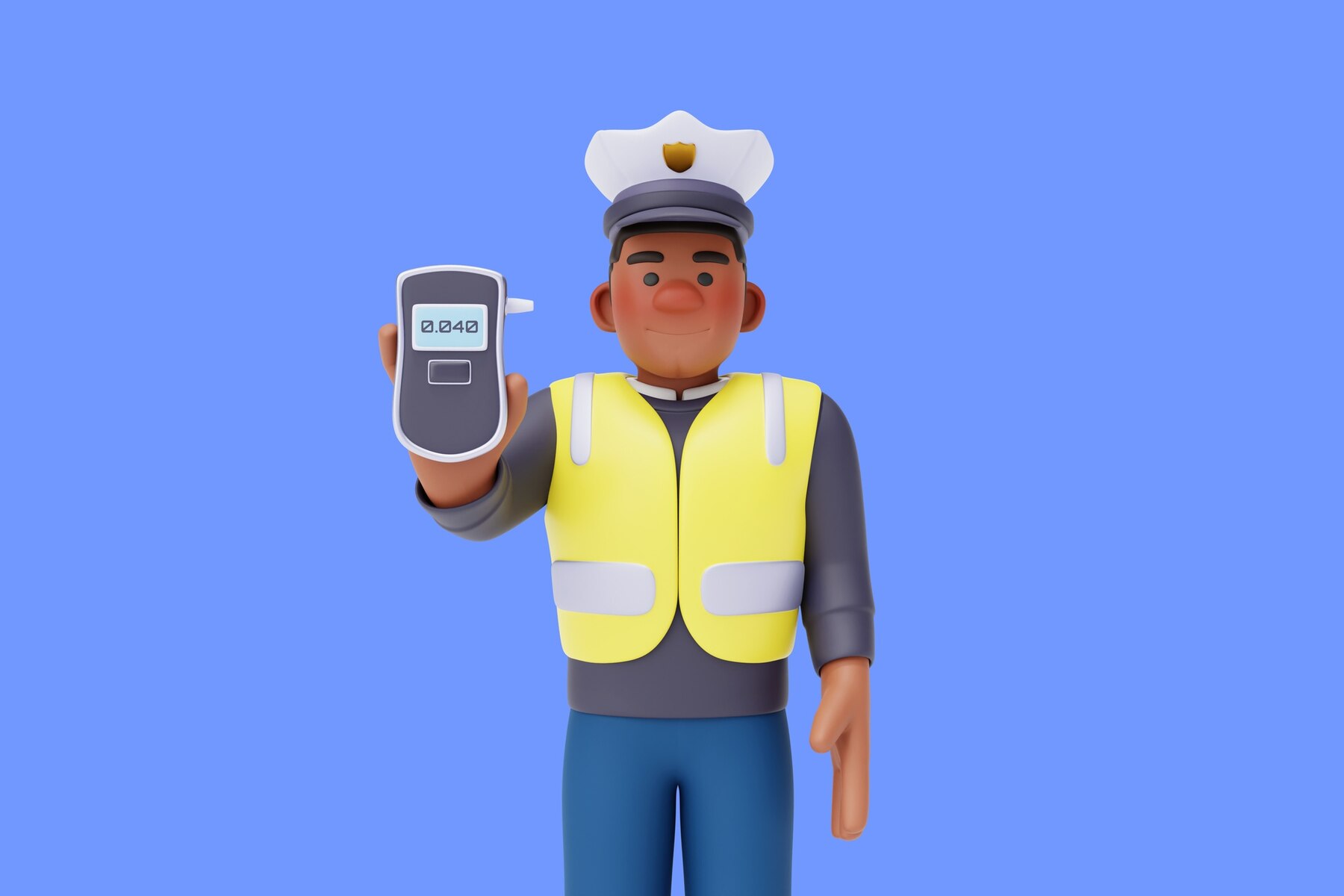
Globally, road traffic accidents account for approximately 1.3 million deaths every year, according to the World Health Organization (WHO). Countless more are injured, and the impact on families, communities, and economies is profound. The leading causes of road accidents include human error, distracted driving, speeding, and poor infrastructure. In addition to the emotional toll, road accidents also create a significant economic burden, with billions of dollars spent annually on medical costs, legal expenses, lost productivity, and property damage.
Despite advancements in vehicle safety features and public awareness campaigns, the statistics remain alarming. Human error accounts for roughly 90% of all road accidents, indicating the need for a more reliable solution. This is where AI comes into play. AI, with its capabilities in data analysis, automation, and real-time decision-making, has the potential to address many of these issues and reduce road accidents significantly. By leveraging AI to assist with decision-making and reduce human error, we can potentially see a significant reduction in road traffic accidents.
AI Solutions That Are Improving Road Safety
1. Autonomous Vehicles
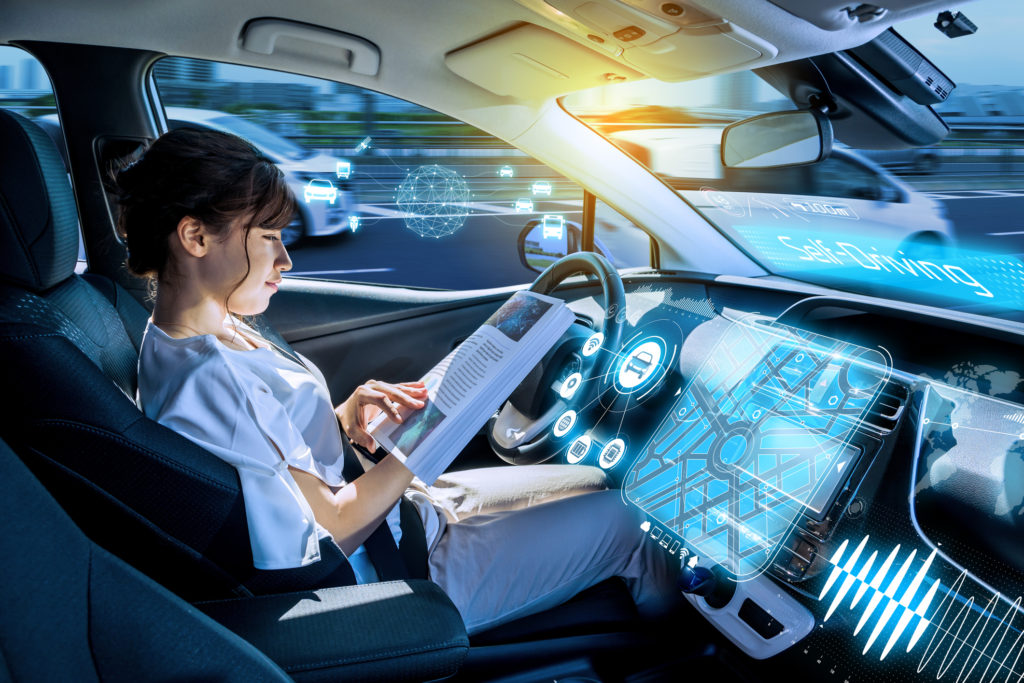
One of the most well-known applications of AI in road safety is the development of autonomous vehicles. These self-driving cars use advanced AI algorithms, sensors, and cameras to navigate roads, recognize obstacles, and make split-second decisions to avoid accidents. By removing the human element, autonomous vehicles have the potential to significantly reduce accidents caused by human error, which accounts for the vast majority of road incidents.
Autonomous vehicles operate using a combination of technologies, including computer vision, machine learning, and sensor fusion. AI processes data from sensors such as LiDAR, radar, and cameras to understand the vehicle's surroundings. This technology enables autonomous vehicles to detect objects, predict the behavior of other road users, and make informed decisions to navigate safely.
Key Features of Autonomous Vehicles for Road Safety:
- Collision Avoidance Systems: AI-powered sensors detect nearby vehicles, pedestrians, and obstacles, allowing the car to take preventive actions such as braking or steering away to avoid a collision. This feature is crucial in preventing accidents in high-traffic areas or during sudden stops.
- Driver Monitoring Systems: AI can also monitor the driver’s state, such as drowsiness or distractions, and issue warnings or even take control if necessary to prevent an accident. By keeping track of the driver's attention level, autonomous vehicles can ensure that the driver is always ready to take over when needed.
- Predictive Analytics: AI can predict potential dangers by analyzing traffic conditions, vehicle speed, and other factors, allowing the vehicle to take preemptive measures to ensure safety. Predictive analytics can also help in planning safer routes, avoiding areas with higher accident rates, or adjusting speed based on road and weather conditions.
- Redundancy and Fail-Safe Mechanisms: Autonomous vehicles are equipped with multiple layers of sensors and redundant systems to ensure safety in case of a malfunction. AI can quickly switch between different systems to maintain control and prevent accidents.
2. Advanced Driver Assistance Systems (ADAS)
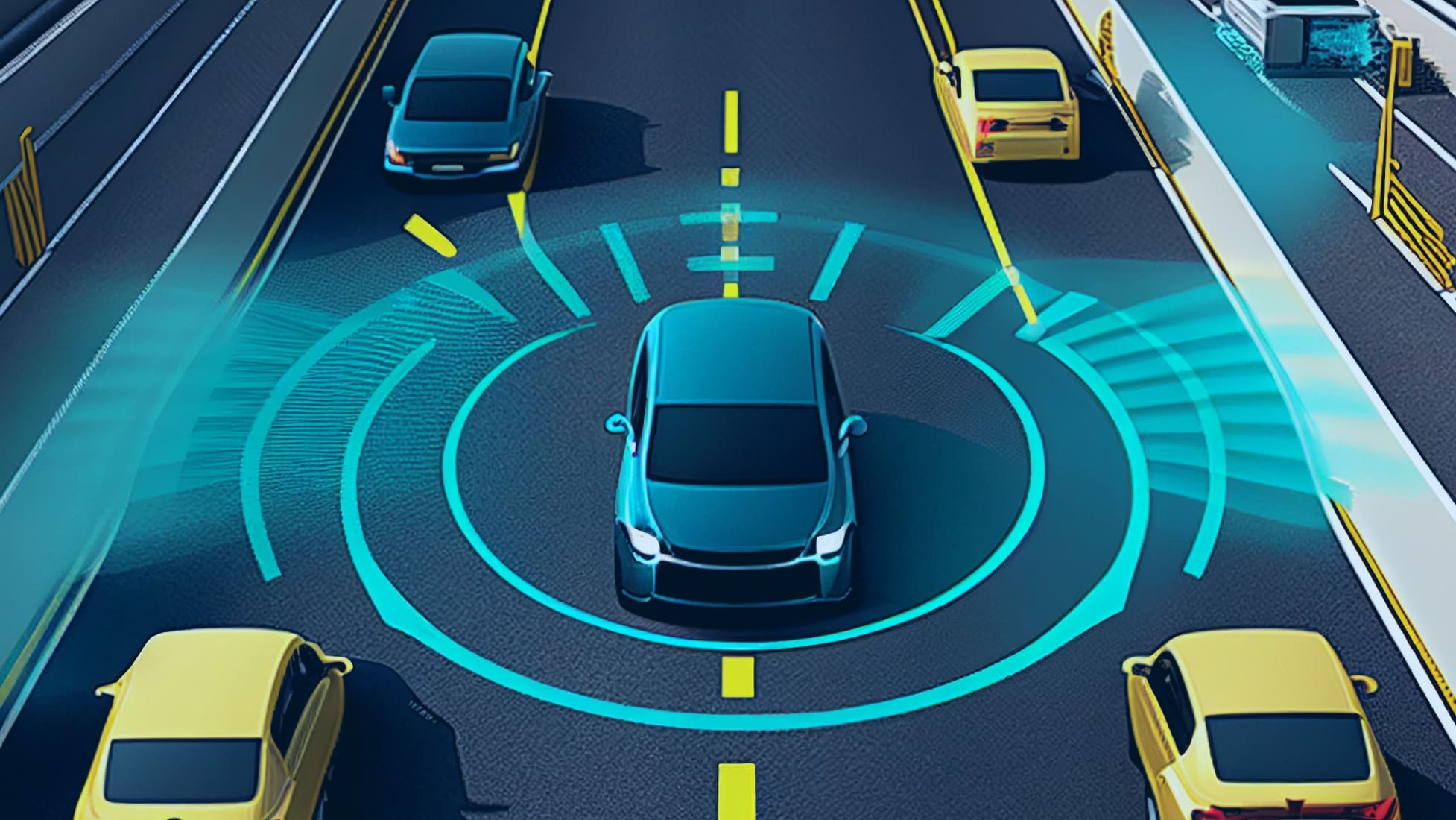
Advanced Driver Assistance Systems (ADAS) are AI-driven features that enhance driver awareness and assist in vehicle control to ensure safety. These systems use sensors, cameras, and machine learning algorithms to provide drivers with real-time alerts and automated responses to potential hazards.
ADAS systems are already becoming standard in many modern vehicles, providing drivers with the extra set of "eyes" needed to avoid dangerous situations. They serve as a bridge between traditional vehicles and fully autonomous ones, offering safety benefits without requiring full automation.
Types of ADAS and Their Impact on Road Safety:
- Lane Keeping Assistance: AI helps keep the vehicle within its lane by detecting lane markings and gently adjusting the steering when the car starts to drift. This feature is particularly useful on highways where lane departure accidents are common.
- Adaptive Cruise Control: AI maintains a safe distance from the car ahead by automatically adjusting the vehicle's speed based on traffic conditions. It allows for smoother driving, reduces the need for sudden braking, and helps prevent rear-end collisions.
- Automatic Emergency Braking (AEB): AI systems detect an imminent collision and apply the brakes automatically to prevent or mitigate the impact. This feature is highly effective in reducing accidents, especially in stop-and-go traffic where drivers may be distracted.
- Blind Spot Monitoring: AI systems can detect vehicles in the driver's blind spot and issue alerts to prevent lane-change accidents. By using radar sensors and cameras, ADAS can provide 360-degree awareness, helping drivers make safer decisions on the road.
- Traffic Sign Recognition: AI can recognize and interpret traffic signs, such as speed limits and stop signs, and provide real-time information to the driver. This helps ensure compliance with road rules and reduces the risk of violations.
ADAS technologies are helping drivers to make better decisions and avoid accidents, ultimately making the roads safer for everyone. By assisting drivers in maintaining focus and providing automatic interventions when necessary, these systems can significantly reduce human error.
3. Intelligent Traffic Management
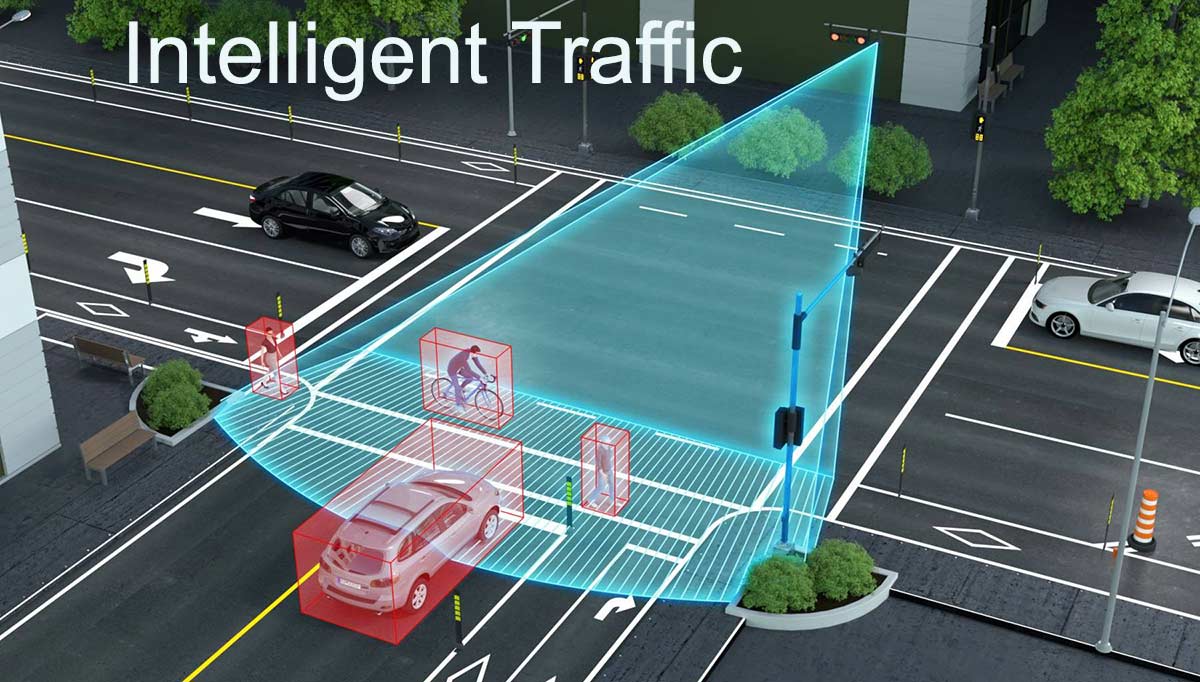
AI is also transforming traffic management systems, which are crucial for maintaining road safety. Traditional traffic lights and congestion management strategies often fail to keep up with the growing number of vehicles on the roads. AI-powered intelligent traffic systems analyze real-time data to optimize traffic flow and reduce congestion.
Efficient traffic management is not just about reducing travel time—it also plays a vital role in improving road safety. Congestion can lead to aggressive driving behaviors, increased accidents, and delays for emergency vehicles. AI-driven traffic management systems can alleviate these issues.
Benefits of AI-Powered Traffic Management:
- Real-Time Traffic Flow Optimization: AI can adjust traffic light timing based on real-time data, ensuring smoother traffic flow and reducing the chances of accidents caused by sudden stops or traffic jams. AI algorithms can analyze data from cameras, sensors, and GPS devices to optimize signal timing, reduce congestion, and minimize the likelihood of collisions.
- Incident Detection: AI-powered cameras and sensors can detect accidents or hazardous conditions on the road, allowing authorities to respond quickly and prevent further incidents. Early detection and rapid response are crucial for minimizing the severity of accidents and preventing secondary collisions.
- Predictive Traffic Analysis: AI can analyze historical traffic data to predict congestion patterns and help city planners make better decisions regarding road infrastructure. By understanding peak traffic times and areas prone to congestion, city planners can design better road layouts and implement traffic control measures that improve overall safety.
- Dynamic Speed Limits: AI systems can adjust speed limits based on real-time traffic and weather conditions, improving safety during adverse conditions such as rain, fog, or ice. Variable speed limits help drivers adapt to changing circumstances, reducing the risk of accidents.
- Emergency Vehicle Prioritization: AI can detect the presence of emergency vehicles and adjust traffic signals to provide them with a clear path. This feature helps emergency responders reach their destinations faster, potentially saving lives.
4. AI for Road Condition Monitoring
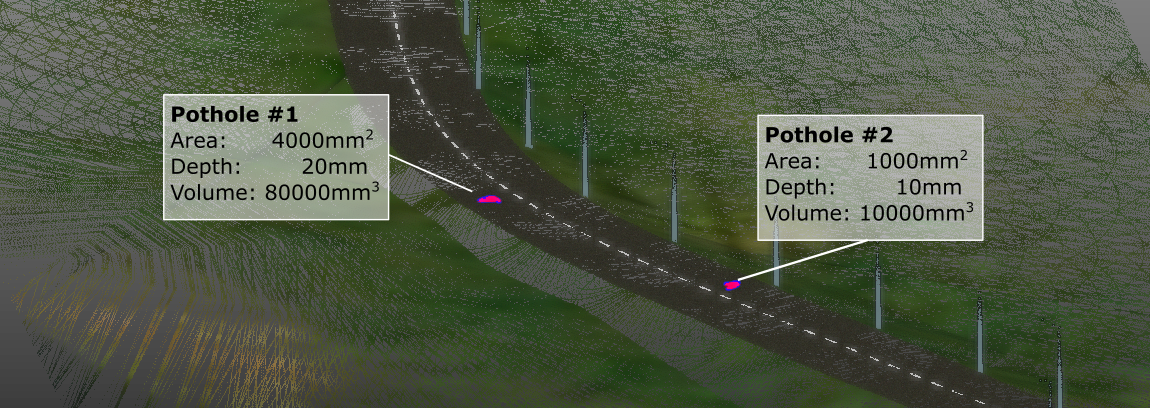
Poor road conditions, such as potholes, cracks, and debris, are major contributors to accidents. AI is being used to monitor road conditions and alert authorities to necessary repairs. Road infrastructure plays a significant role in ensuring road safety, and timely maintenance is crucial for preventing accidents caused by poor road quality.
How AI Helps in Road Condition Monitoring:
- Drone Surveillance: AI-powered drones can survey large areas of road infrastructure, identifying issues like potholes, cracks, or faded lane markings, which can then be addressed promptly to ensure road safety. Drones equipped with high-resolution cameras and AI algorithms can cover more ground in less time, providing detailed insights into the state of the roads.
- Smart Sensors: Sensors installed in vehicles or along roads can gather data about road quality and alert the relevant authorities when maintenance is needed. These sensors can detect vibrations and irregularities, helping to identify problem areas before they become dangerous.
- Machine Learning for Predictive Maintenance: By analyzing data on road wear and tear, AI can predict when certain areas will need maintenance, helping authorities take proactive measures. Predictive maintenance ensures that roads are repaired before they become hazardous, reducing the likelihood of accidents.
- Crowdsourcing Data: AI can also analyze crowdsourced data from drivers who report road issues through mobile apps. By aggregating this data, AI can provide a comprehensive overview of road conditions and prioritize repairs based on severity and traffic volume.
5. AI-Powered Predictive Analytics for Accident Prevention
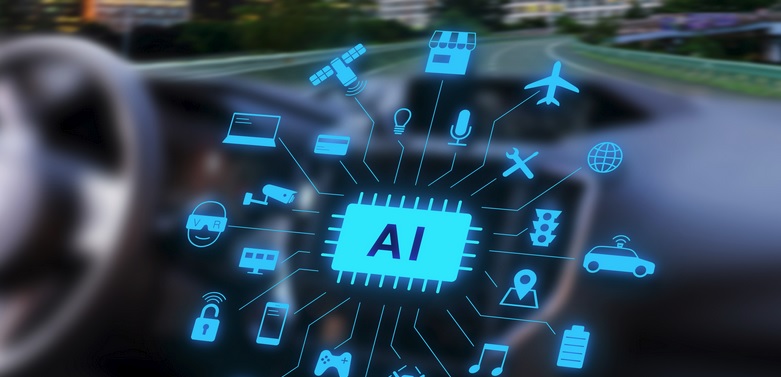
AI can also help predict where accidents are most likely to happen based on a variety of factors such as weather, traffic density, road conditions, and driver behavior. Predictive analytics allows authorities to take preventive measures, such as increasing patrols, adjusting traffic signals, or alerting drivers to hazardous conditions.
Applications of Predictive Analytics in Road Safety:
- Accident Hotspot Identification: AI analyzes historical accident data to identify areas where accidents are more likely to occur, allowing for targeted safety improvements in those areas. Authorities can use this information to install additional safety measures, such as warning signs, speed bumps, or barriers.
- Weather-Based Alerts: AI systems use weather data to predict hazardous conditions, such as slippery roads, and provide real-time alerts to drivers to reduce speed or take extra caution. This proactive approach helps drivers adjust their behavior to match road conditions, reducing the risk of accidents.
- Traffic Pattern Analysis: By analyzing real-time and historical data, AI can predict congestion and provide alternative routes, thereby reducing the likelihood of accidents caused by high traffic volume. AI can also identify unusual traffic patterns that may indicate a developing hazard, such as a stalled vehicle or an accident.
- Behavioral Analysis: AI can predict risky driving behavior by analyzing data such as sudden acceleration, frequent lane changes, or erratic braking. By identifying these behaviors early, AI can provide real-time feedback to drivers or alert authorities to intervene if necessary.
The Role of AI in Driver Behavior Monitoring
Driver behavior is a major factor in road safety, with issues like distracted driving, speeding, and impaired driving contributing to a large percentage of road accidents. AI is being used to monitor driver behavior and provide real-time feedback to ensure safer driving.
Driver monitoring systems use cameras and sensors to track a driver's physical and mental state, ensuring that they are fit to drive. By analyzing facial expressions, eye movements, and other indicators, AI can determine if a driver is distracted, fatigued, or impaired and take appropriate action to prevent accidents.
AI Solutions for Driver Behavior Monitoring:
- Driver Fatigue Detection: AI-powered cameras can analyze facial expressions and detect signs of drowsiness. If fatigue is detected, the system can issue an alert or suggest a break to prevent accidents. In some cases, the system can even take over control of the vehicle and bring it to a safe stop if the driver is unresponsive.
- Distracted Driving Alerts: AI can detect when a driver is not paying attention to the road, such as when they are using a mobile phone, and issue a warning to help refocus their attention. AI systems can also monitor the driver's head position and eye movements to ensure that their attention remains on the road.
- Speed Monitoring and Alerts: AI systems can monitor the vehicle's speed and provide alerts if the driver is exceeding the speed limit, encouraging safer driving practices. These systems can also adjust speed based on road and traffic conditions, helping to prevent speeding-related accidents.
- Behavioral Scoring: AI can assign a safety score to drivers based on their driving habits, such as braking patterns, acceleration, and adherence to speed limits. This score can be used by insurance companies to offer incentives for safe driving or by fleet managers to ensure that their drivers are adhering to safety standards.
Challenges and Considerations in AI-Driven Road Safety
While AI has enormous potential to improve road safety, there are also challenges that must be addressed to fully realize its benefits:
- Data Privacy: The use of cameras and sensors to monitor driver behavior and road conditions raises concerns about privacy. Ensuring that personal data is handled responsibly and securely is crucial for public acceptance of AI-driven solutions. Clear regulations and transparent data policies are needed to protect users' privacy.
- Technology Adoption: Widespread adoption of AI-powered road safety technologies requires significant investment in infrastructure, which may be challenging for some regions or countries with limited resources. Governments and private companies must work together to make these technologies accessible and affordable for all.
- Human-AI Interaction: While autonomous vehicles and ADAS are designed to assist drivers, there is still a need for effective human-AI interaction. Drivers must understand how to use these systems properly and be able to take control when necessary. Education and training are essential to ensure that drivers can use AI technologies effectively and safely.
- Reliability of AI Systems: AI systems are not infallible, and technical issues or misinterpretations of data can lead to errors. Ensuring that AI systems are reliable and have fail-safe mechanisms is critical for road safety. Redundant systems, regular updates, and rigorous testing are necessary to minimize the risk of failures.
- Ethical Considerations: AI-driven decision-making in autonomous vehicles raises ethical questions, such as how to prioritize different lives in the event of an unavoidable accident. Developing ethical guidelines for AI decision-making is crucial to address these concerns and ensure public trust in autonomous systems.
The Future of AI in Road Safety
The future of AI in road safety looks promising, with advancements being made every day to make our roads safer and more efficient. Here are some exciting developments to look forward to:
- Vehicle-to-Everything (V2X) Communication: AI is expected to play a crucial role in enabling vehicles to communicate with each other and with road infrastructure. This technology will allow vehicles to share information about road conditions, traffic, and potential hazards, making driving safer. V2X communication will create a connected ecosystem where vehicles, traffic signals, and pedestrians can interact seamlessly.
- Fully Autonomous Public Transportation: As AI technology advances, we can expect to see more widespread adoption of fully autonomous buses and taxis, reducing the likelihood of accidents caused by human error. Autonomous public transportation can also improve accessibility for those who cannot drive, such as the elderly or disabled, making transportation more inclusive.
- AI-Enhanced Infrastructure: AI will be increasingly used to enhance road infrastructure, such as smart traffic signals, adaptive road signs, and intelligent pedestrian crossings, all designed to improve safety for all road users. AI-driven infrastructure can respond dynamically to changing traffic conditions, ensuring that roads are safe and efficient for everyone.
- Augmented Reality (AR) for Drivers: AI-powered AR systems could provide real-time information to drivers, such as hazard alerts, navigation prompts, and speed limits, helping them make safer driving decisions. AR could also be used to highlight potential dangers on the road, such as pedestrians or obstacles, providing an extra layer of safety.
- AI for Insurance and Risk Assessment: AI can also be used by insurance companies to assess risk and provide personalized premiums based on driving behavior. By analyzing data from driver monitoring systems, AI can offer incentives for safe driving and help reduce the overall number of accidents on the road.
- Integration of AI with Smart Cities: AI-driven road safety solutions will become a key component of smart city initiatives. By integrating AI with other smart city technologies, such as IoT devices and connected infrastructure, cities can create a more efficient and safer transportation ecosystem. Smart cities will be able to optimize traffic flow, enhance public transportation, and ensure that road users are kept safe at all times.
Conclusion
AI is transforming the landscape of road safety, offering innovative solutions that have the potential to significantly reduce accidents and save lives. From autonomous vehicles to intelligent traffic management systems, AI is helping to address the root causes of road accidents and make our roads safer for everyone. While challenges remain, the continued development and adoption of AI technologies hold the promise of a future with fewer accidents, less congestion, and safer journeys for all.
To make road safety a reality, it’s essential for governments, private companies, and individuals to collaborate and embrace AI technologies. By doing so, we can create a safer and more efficient transportation system for everyone. The road to the future is being paved today, and with AI leading the way, we can look forward to a safer tomorrow—one where technology and human innovation work hand in hand to protect lives and ensure that every journey ends safely.

